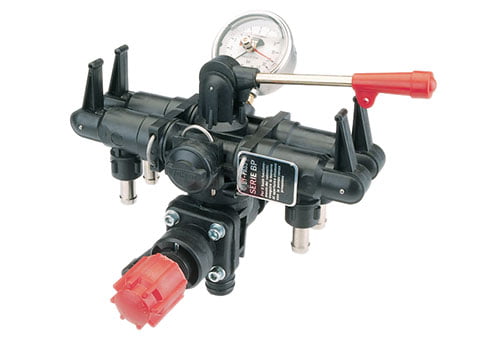Comprehending the Significance of Control Valves in Process Automation
Comprehending the Significance of Control Valves in Process Automation
Blog Article

Maximize Energy Savings and Convenience With Advanced Building Automation Controls
In the realm of modern-day style and facility monitoring, the integration of advanced structure automation manages stands as an essential advancement. By using the power of automation, buildings can adjust, react, and progress in means that were once unimaginable.
Energy Performance Perks
Power performance benefits can dramatically minimize power intake and functional costs in buildings. By implementing energy-efficient techniques and technologies, building owners and operators can attain substantial financial savings while also adding to environmental sustainability. One of the main advantages of boosting power efficiency in buildings is the decrease of utility bills. Energy-efficient systems, such as advanced building automation controls, can enhance making use of sources like cooling, home heating, and lighting, resulting in lower power expenses gradually.
Furthermore, improved power performance can extend the lifespan of building equipment and systems. By running much more efficiently, cooling and heating systems, lighting fixture, and other building parts experience much less damage, causing lowered upkeep and replacement costs. Additionally, energy-efficient structures often command higher residential or commercial property worths and rental rates, providing long-lasting economic benefits to owners.
Moreover, power efficiency can boost passenger comfort and efficiency. Effectively managed interior atmospheres with ideal lighting and thermal problems create a more enjoyable and helpful workspace, leading to enhanced employee satisfaction and efficiency. Overall, the energy efficiency benefits related to innovative building automation controls are complex, encompassing expense financial savings, ecological stewardship, and passenger well-being.
Enhanced Convenience Control
Enhancing comfort control in building atmospheres calls for an innovative integration of sophisticated automation systems for ideal owner well-being. By utilizing sophisticated structure automation controls, centers can customize the interior setting to fulfill the certain requirements and preferences of occupants. These systems make it possible for precise guideline of temperature, air flow, and lighting, creating a comfortable and productive ambience. Passenger contentment and efficiency are very closely linked to thermal convenience, making it necessary to have systems in area that can adapt to altering conditions in real-time.
By incorporating these advanced controls, structures can not just improve convenience yet additionally improve energy performance by enhancing system procedures based on real occupancy and usage patterns. Ultimately, prioritizing passenger convenience via advanced automation systems leads to a more satisfying and much healthier interior setting.
Functional Performance Improvements

Additionally, the application of real-time surveillance and analytics tools allows structure drivers to recognize power inefficiencies and operational abnormalities without delay. By continuously keeping track of power usage patterns and system efficiency metrics, modifications can be made in real-time to optimize energy consumption and guarantee peak operational performance. control valves. In addition, incorporating need feedback strategies into building automation controls can further boost functional efficiency by dynamically adjusting energy usage based on grid problems and prices signals
Indoor Environment Optimization
Reliable interior environment optimization is a basic aspect of structure automation controls, ensuring occupants' comfort and health while making best use of power cost savings. By using sophisticated sensors and controls, constructing automation systems can constantly monitor and readjust temperature level, moisture degrees, air top quality, and air flow to produce an optimum indoor atmosphere. Preserving constant and comfy problems not just boosts passenger satisfaction but likewise improves efficiency and overall well-being.
Indoor climate optimization also plays a vital duty in energy effectiveness. By fine-tuning cooling, heating, and air flow systems based on real-time data and tenancy patterns, developing automation controls can dramatically minimize power usage - control valves. Applying techniques such as demand-controlled air flow and thermal zoning can assist decrease power waste while ensuring that each area of the building obtains the required conditioning.

Sustainable Atmosphere Development
Structure automation controls not only enhance indoor environment conditions for power performance and owner convenience yet also lay the structure for producing a sustainable atmosphere with tactical administration of resources and systems. By incorporating innovative structure automation innovations, such as sensing units, actuators, and smart software program, facilities can change and check power usage in real-time to lessen waste and decrease their carbon footprint. These systems enable anticipating upkeep, determining prospective problems prior to they intensify and enhancing equipment performance to improve durability and effectiveness.
Furthermore, sustainable environment production prolongs past energy administration to include water preservation, waste decrease, and interior air quality improvement. Building automation controls can regulate water use, discover leaks, and ensure correct garbage disposal techniques, adding to overall sustainability initiatives. Furthermore, by controlling and monitoring ventilation and purification systems, these modern technologies boost resident wellness and performance while lowering power usage connected with cooling and heating procedures.
Final Thought
In final thought, advanced building automation controls offer significant benefits in regards to energy savings, convenience control, functional performance, interior climate optimization, and creating a lasting atmosphere. By carrying out these controls, buildings can achieve optimum performance while Look At This minimizing power consumption and boosting passenger comfort. It is evident that the usage of advanced automation modern technology is critical in improving structure performance and developing a more sustainable future.
Power performance benefits can substantially reduce energy usage and functional prices in buildings. Generally, the power efficiency benefits connected with sophisticated structure automation controls are multifaceted, encompassing expense financial savings, ecological stewardship, and occupant well-being.
Furthermore, integrating need reaction approaches right into structure automation controls can further improve operational effectiveness by dynamically adjusting power use based on grid conditions and prices signals.
Structure automation manages not only enhance indoor climate conditions for energy efficiency and resident comfort however likewise lay the foundation for creating image source a sustainable environment through calculated monitoring of systems and sources.In conclusion, advanced building automation manages offer significant advantages in terms of power cost savings, comfort control, operational effectiveness, interior climate optimization, and producing a lasting environment.
Report this page